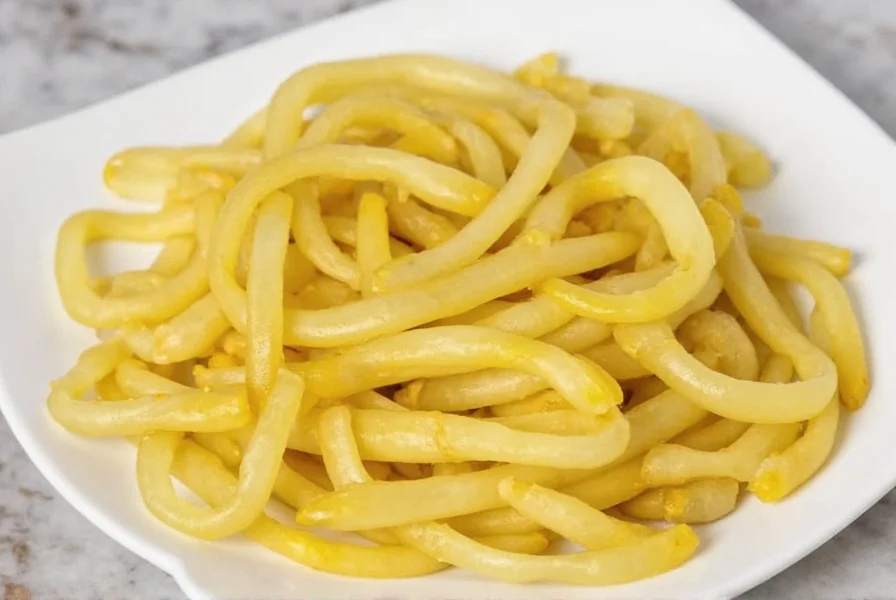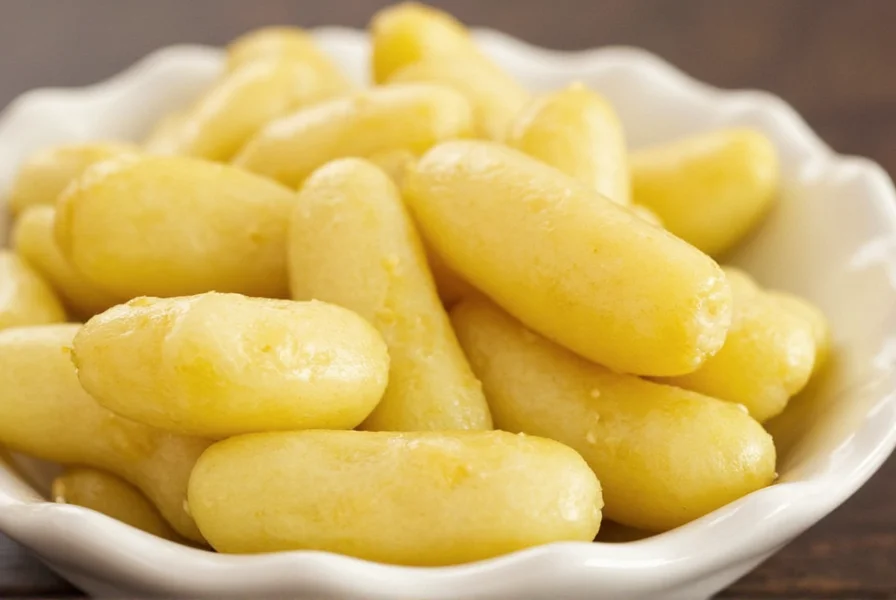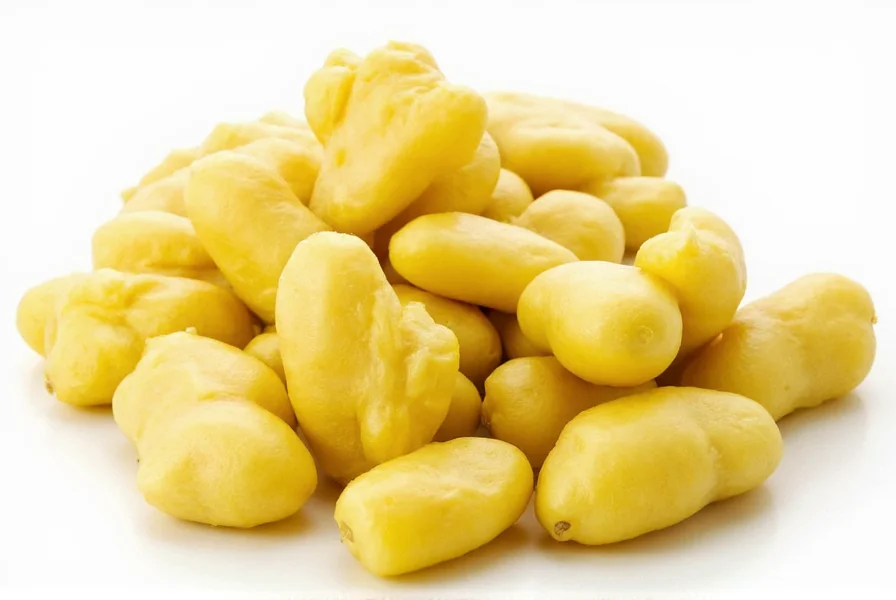Understanding this versatile ingredient begins with recognizing its cultural significance and culinary applications. Pickled ginger transforms the sharp heat of fresh ginger into a nuanced accompaniment that enhances rather than overwhelms dishes. The pickling process preserves ginger's beneficial compounds while creating a unique flavor profile perfect for balancing rich foods.
What Exactly Is Pickled Ginger?
Pickled ginger represents one of the most distinctive preparations of ginger root, differing significantly from its fresh counterpart. The process involves slicing young ginger rhizomes thinly and immersing them in a solution of rice vinegar, sugar, and salt. Over time, the ginger absorbs these flavors while maintaining its crisp texture.
Two primary varieties dominate the pickled ginger landscape:
| Variety | Color | Sweetness Level | Primary Use |
|---|---|---|---|
| Gari | Pale pink | High | Sushi accompaniment |
| Beni Shoga | Bright red | Low | Rice bowls and noodle dishes |
The characteristic pink color of gari develops naturally as the ginger reacts with the vinegar solution. Younger ginger produces the pale pink hue commonly served with sushi, while beni shoga achieves its vibrant red color through the addition of red perilla leaves or food coloring.

The Science Behind Pickled Ginger's Transformation
When ginger undergoes the pickling process, several chemical transformations occur that fundamentally alter its properties. The acetic acid in vinegar breaks down some of the ginger's fibrous structure, creating a more tender texture. Simultaneously, the sugar solution penetrates the ginger slices through osmosis, replacing some of the water content and creating the distinctive sweet-tangy flavor profile.
Research indicates that pickling preserves many of ginger's beneficial compounds, including gingerols, though in modified forms. The fermentation process creates shogaols, which may offer different health benefits than their fresh counterparts. This transformation explains why pickled ginger provides digestive benefits without the intense heat of fresh ginger.
Culinary Applications Beyond Sushi
While most Western diners associate pickled ginger exclusively with sushi, its culinary applications span numerous cuisines and cooking techniques. Japanese chefs traditionally serve gari between different types of sushi to cleanse the palate, but creative cooks worldwide have discovered additional uses:
- As a bright accent in grain bowls and salads
- Chopped finely to add complexity to salad dressings
- Paired with rich meats like duck or pork to cut through fattiness
- As a surprising addition to seafood ceviche for added dimension
- Finely diced in mayonnaise-based sauces for sandwiches
Chefs increasingly recognize pickled ginger's versatility in modern fusion cuisine. Its balanced flavor profile makes it an excellent bridge between sweet and savory elements in complex dishes. When experimenting with homemade pickled ginger, consider adjusting the sugar-to-vinegar ratio to match your intended application—more vinegar for savory dishes, slightly sweeter for dessert applications.
Creating Authentic Pickled Ginger at Home
Producing high-quality pickled ginger requires attention to ingredient selection and proper technique. The key to exceptional homemade pickled ginger lies in using young, tender ginger root with smooth, tight skin. Older ginger develops fibrous textures and stronger heat that doesn't mellow well during pickling.
Follow this professional approach for restaurant-quality results:
- Select young ginger with thin skin (no need to peel)
- Slice paper-thin using a sharp knife or mandoline
- Prepare brine with 1 cup rice vinegar, 1/2 cup sugar, and 1 teaspoon salt
- Bring brine to simmer, add ginger slices, and remove immediately
- Cool completely before transferring to sterilized jars
- Allow flavors to develop for 3-5 days before serving

For traditional pink gari, include a small amount of umeboshi vinegar in your brine. The natural pigments in this plum vinegar react with the ginger to create the characteristic pale pink color without artificial additives. Properly stored in the refrigerator, homemade pickled ginger maintains quality for 3-4 months.
Nutritional Profile and Health Considerations
Pickled ginger retains many of fresh ginger's beneficial compounds while offering unique nutritional advantages. The pickling process preserves gingerols and creates new compounds through fermentation. A one-tablespoon serving typically contains:
- Approximately 5 calories
- 1 gram of natural sugars
- Trace amounts of potassium and magnesium
- Active ginger compounds in modified forms
Unlike fresh ginger, which can be quite spicy, pickled ginger offers digestive benefits with significantly less heat, making it accessible to those sensitive to strong flavors. The vinegar component further enhances its digestive properties by stimulating stomach acid production. However, those monitoring sodium intake should consume pickled ginger in moderation due to its salt content.
Storage Guidelines for Maximum Freshness
Proper storage determines how long your pickled ginger maintains optimal flavor and texture. Commercially prepared pickled ginger typically remains fresh for 6-8 months unopened. Once opened, transfer to an airtight container and store in the refrigerator.
Homemade pickled ginger follows similar storage guidelines but has a shorter shelf life due to the absence of preservatives. For best results:
- Always use clean utensils when removing ginger from the jar
- Ensure ginger remains fully submerged in the brine
- Store in the main compartment of your refrigerator (not the door)
- Consume within 3-4 months for peak quality
Signs of spoilage include mold growth, significant darkening, or an off smell. Properly stored pickled ginger should maintain its crisp texture and vibrant color throughout its shelf life.
What's the difference between gari and beni shoga?
Gari refers to the sweet, pale pink pickled ginger served with sushi, made from young ginger in a vinegar-sugar solution. Beni shoga is the thinner, brighter red pickled ginger typically used with rice bowls and noodle dishes, often colored with red perilla leaves. Gari has higher sugar content and milder flavor compared to the more acidic beni shoga.
Can I make pickled ginger without it turning pink?
Yes, traditional gari's pink color develops naturally when young ginger reacts with the vinegar solution. For white pickled ginger, use older ginger root which doesn't develop the pink hue, or add a small amount of lemon juice to the brine to prevent the color change. The flavor remains excellent regardless of color.
Is pickled ginger as healthy as fresh ginger?
Pickled ginger retains many beneficial compounds found in fresh ginger, though in modified forms. The pickling process preserves gingerols while creating new compounds like shogaols through fermentation. While fresh ginger contains higher concentrations of certain compounds, pickled ginger offers digestive benefits with less heat, making it more accessible for regular consumption.
Why do sushi restaurants serve pickled ginger between different fish?
Sushi chefs serve pickled ginger (gari) between different types of fish to cleanse the palate. The mild acidity and subtle sweetness reset your taste buds, allowing you to fully appreciate each fish's unique flavor profile without carryover from previous bites. This tradition enhances the overall sushi experience by maintaining flavor clarity throughout the meal.
Can I use pickled ginger in cooking or is it just for eating raw?
Absolutely, pickled ginger works well in cooking beyond its traditional raw application. Chefs incorporate it into sauces, dressings, and marinades where its balanced flavor enhances rather than overwhelms. Try adding finely chopped pickled ginger to stir-fry sauces, salad dressings, or even baked goods for a subtle flavor dimension. The pickling process makes its flavor more integrated in cooked applications compared to fresh ginger.











 浙公网安备
33010002000092号
浙公网安备
33010002000092号 浙B2-20120091-4
浙B2-20120091-4